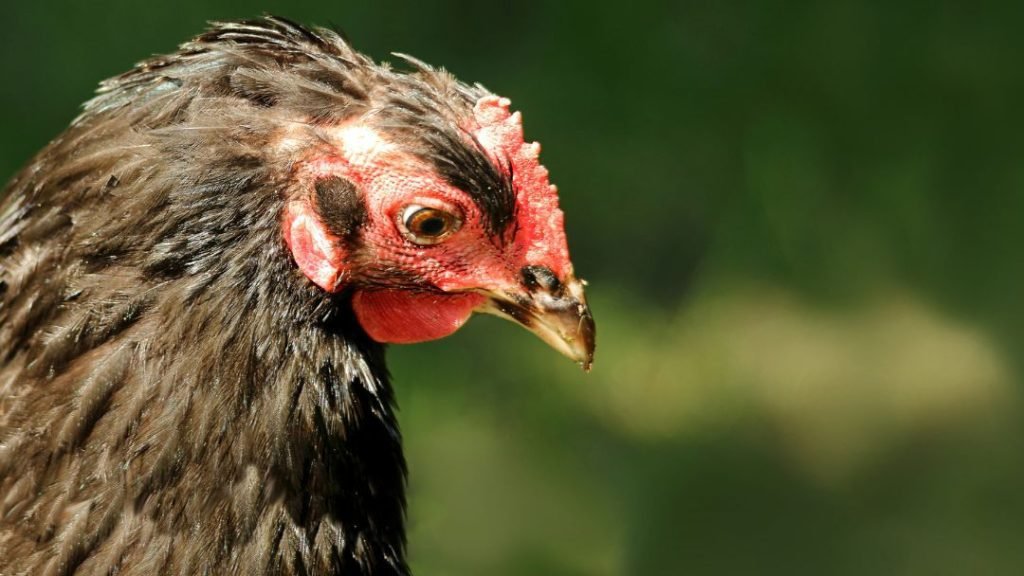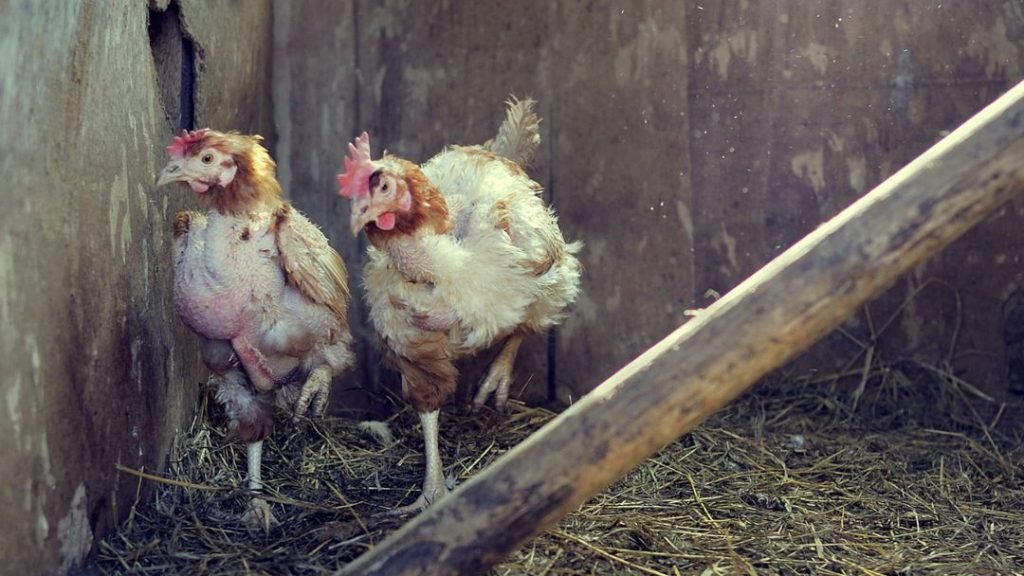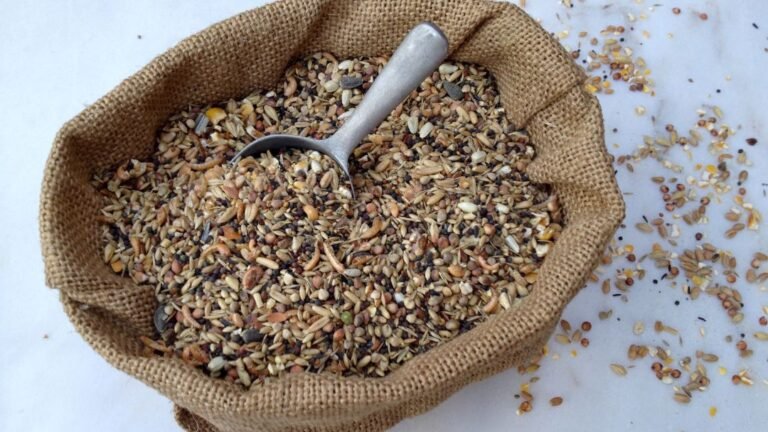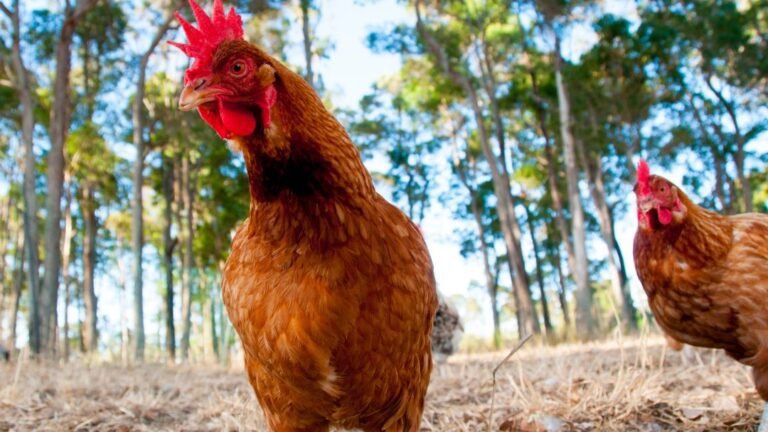Tips to help molting chickens include providing a balanced diet with extra protein, maintaining a clean and stress-free environment, and applying natural remedies to soothe the chicken’s skin.
Understanding the molting process is crucial for chicken owners. In this article, we will share tips to assist chickens during their molting period.
What Is Molting And Why Is It Important For Chickens?
Molting is a natural process in which chickens shed their old feathers and grow new ones. It is an essential part of their life cycle and plays a significant role in maintaining their health and vitality. Understanding the molting process can help chicken owners take proper care of their flock during this time.
Here are some key points to know about molting and its importance:
- Molting is a process where chickens go through a period of feather loss and regrowth.
- It typically occurs annually, usually during the late summer or early fall.
- Molting is essential for chickens as it allows them to replace damaged or worn-out feathers.
- During molting, chickens divert their energy from egg production to feather growth, which helps them maintain their plumage.
- The process lasts for several weeks, during which chickens may appear bare or patchy.
- Molting also serves as a natural way for chickens to regulate their body temperature, as new feathers offer better insulation.
- Additionally, molting helps in establishing the pecking order within the flock, as feather growth alters the chickens’ appearance.
Understanding the molting process and its significance enables chicken owners to provide appropriate care and support to their birds during this natural cycle. Now, let’s explore the different stages of molting and what to expect.
The Different Stages Of Molting And What To Expect
Molting can be divided into three distinct stages, each characterized by specific changes in a chicken’s appearance and behavior. Here’s a breakdown of each stage:
Pre-Molt:
- This stage occurs before the feathers start to shed.
- Chickens may exhibit decreased egg production and changes in their feeding habits.
- New feathers begin to grow beneath the old ones.
Molt:
- Feathers start to fall off, and chickens may look ragged or unkempt.
- The molt can range from gentle feather loss to an abrupt shed, depending on the chicken’s breed.
- Chickens may spend more time preening themselves during this stage.
Post-Molt:
- New feathers grow to replace the old ones.
- The chicken’s appearance gradually improves as the plumage becomes denser.
- Egg production usually resumes, though it may take a few weeks for it to return to normal levels.
Knowing the different stages of molting helps chicken owners anticipate and adapt to the changes their birds will undergo. The molting cycle can have varying durations for different chickens. Let’s explore how often chickens molt and when it typically occurs.
How Often Do Chickens Molt And When Does It Typically Occur?
Chickens generally molt once a year, usually during the fall season. However, the frequency and timing of molting can vary based on factors such as:
- Age: Young chickens may experience their first molt at around 6 to 8 months old, while older birds tend to molt annually.
- Breed: Some chicken breeds molt more frequently than others. Certain breeds, like the Leghorn, are known for molting earlier and more often.
- Environmental factors: Changes in daylight duration and temperature fluctuations can influence molting timing.
While most chickens molt once a year, it’s essential to remember that individual variations exist. Some chickens may undergo partial molts throughout the year, shedding and growing feathers in small batches. Others may experience extended molting periods or molt irregularly.
As chicken owners, being aware of these molting patterns allows us to provide appropriate support during this natural process. From ensuring a balanced diet to providing a stress-free environment, we can help our chickens navigate the molting cycle with minimal disruption to their well-being.
Understanding the molting process, its stages, and frequency empowers us to better care for our feathered friends. Let’s embrace molting as a natural part of our chickens’ lives and support them through this fascinating transformation.

Providing Proper Nutrition During Molting
During the molting process, it’s important to provide chickens with proper nutrition. Here are some tips to help your chickens through molting.
The Role Of Nutrition In Supporting Chickens During Molt
- Nutrition plays a crucial role in supporting chickens during the molting process. It helps supply the essential nutrients needed for healthy feather regrowth and overall well-being.
- A well-balanced diet ensures that chickens have the necessary energy and resources to develop strong, vibrant feathers.
- Proper nutrition also aids in maintaining the chicken’s immune system, preventing the onset of diseases or infections during this vulnerable period.
Essential Vitamins And Minerals For Healthy Feather Regrowth
- Protein: An adequate protein intake is essential as feathers are primarily composed of protein. It helps promote feather regrowth and strengthens existing feathers.
- Vitamins A and D: These vitamins are crucial for feather development and maintenance. Vitamin A supports the overall health of skin and feathers, while Vitamin D aids in calcium absorption, promoting strong feather structure.
- Biotin: Biotin supports healthy growth and development of feathers. It promotes keratin production, a protein necessary for feather strength.
- Zinc: Zinc plays a vital role in re-keratinization, the process of forming new keratin cells for feather regrowth. Adequate zinc levels ensure healthy and strong new feathers.
Recommended Diet Modifications And Supplements For Molting Chickens
- Increase protein intake: During molting, chickens require a higher protein content in their diet. Offer protein-rich sources such as mealworms, fish meal, or soybean meal to support feather regrowth.
- Provide nutrient-dense feeds: Incorporate feeds that are specifically formulated for molting chickens. These feeds often have higher levels of essential nutrients required for feather growth.
- Offer fresh fruits and vegetables: Including fresh fruits and vegetables in their diet provides additional vitamins and minerals necessary for healthy feather regrowth.
- Consider supplements: If needed, supplements such as poultry vitamin mixes or essential fatty acids can help ensure chickens receive the necessary nutrients for feather development.
Addressing Challenges With Appetite And Feeding Strategies During Molt
- Decreased appetite: Chickens may experience a reduced appetite during molting. Offer smaller, more frequent meals to entice them to eat and allow for easier digestion.
- Palatability: Ensure that the feed is fresh and appealing to encourage chickens to eat. Adding a small amount of molasses or vegetable oil to their feed can enhance their palatability.
- Calcium supplementation: Molting chickens may have difficulty absorbing calcium. Provide calcium supplements, such as crushed oyster shells, separately, allowing them to consume them at their own pace.
- Molting in the flock: Separate molting chickens from non-molting ones to prevent pecking and aggression. This reduces stress and allows molting chickens to focus on regrowing their feathers.
Remember, providing proper nutrition during molting is crucial for the overall health and successful feather regrowth of chickens. By incorporating necessary dietary modifications and ensuring a balanced diet, you can support your chickens through this natural process.
Creating A Comfortable Environment For Molting Chickens
Help your molting chickens by creating a cozy environment. Follow these tips for a smooth molt, providing warmth, proper nutrition, and reduced stress levels to support your feathered friends during this transitional period.
The molting process can be a challenging time for chickens, as they shed their old feathers and grow new ones. To help your chickens through this process, it’s important to create a comfortable environment that promotes their well-being and minimizes stress.
Temperature And Lighting Considerations During Molting
- Provide a warm and draft-free environment for your molting chickens, as they can be more sensitive to temperature changes during this time. Strive to maintain a consistent temperature inside the coop.
- Ensure adequate ventilation to prevent moisture buildup, which can lead to respiratory issues.
- Consider using a heat lamp or a small heater to provide additional warmth, especially during colder months, but be cautious of fire hazards and ensure it is properly installed.
- Adjust the lighting in the coop to simulate natural daylight hours. As the days get shorter, you may need to supplement with artificial lighting to maintain a consistent day-night cycle. Aim for a minimum of 14 hours of light each day, as this helps stimulate feather growth.
Designing A Molting-Friendly Coop Set-Up
- Provide plenty of roosting space and comfortable perches, as chickens may spend more time resting during molting.
- Create secluded areas or additional nest boxes where molting chickens can retreat and feel safe.
- Use soft bedding, such as straw or pine shavings, to minimize discomfort and potential feather damage.
- Ensure ample space within the coop to prevent overcrowding, as increased aggression can occur during molting.
Importance Of Cleanliness And Hygiene In Preventing Stress And Infections
- Regularly clean the coop, removing any accumulated feathers, droppings, and dirt. A clean environment reduces the risk of mites, lice, and other pests, which can further stress molting chickens.
- Provide dust baths filled with fine sand or diatomaceous earth. This helps chickens keep their new feathers clean and prevents mites and other parasites.
- Maintain a nutritious diet rich in protein, vitamins, and minerals to support feather regrowth. Offer high-quality feed supplemented with additional protein sources such as mealworms or soybeans.
- Provide fresh, clean water at all times to keep your chickens hydrated and promote overall health.
By ensuring a comfortable and supportive environment for your molting chickens, you can help them navigate this natural process with ease. Paying attention to temperature, lighting, coop design, and cleanliness will go a long way in keeping your chickens healthy and happy during molting.
Minimizing Stress Factors During Molting
During molting, it’s important to minimize stress factors for your chickens. Follow these tips to aid in their molting process and ensure their well-being.
Strategies To Reduce Stress And Promote A Calm Molt
During the molting period, it is essential to minimize stress factors for your chickens to ensure a smooth molt. By implementing simple strategies, you can create a calm environment that supports the molting process. Here are some effective techniques to reduce stress in molting chickens:
- Maintain a consistent routine: Chickens thrive on routine and familiarity. Keeping their daily schedule consistent during molting helps reduce stress. Stick to regular feeding times, let them out at the same time each day, and maintain their usual bedtime routine.
- Provide a calm and quiet environment: Loud noises and constant disruptions can increase stress levels for molting chickens. Minimize disturbances from nearby machinery, loud music, or barking dogs. If possible, consider moving them to a quiet and secluded area away from high-traffic areas.
- Avoid unnecessary handling: Molting chickens may feel vulnerable due to their changing feathers. Minimizing handling and unnecessary human interaction during the molt can help reduce stress. Give them the space they need to rest and recover without disruption.
- Maintain a balanced diet: Proper nutrition plays a significant role in supporting molting chickens. Ensure they have access to a well-balanced and high-quality diet that is rich in protein, vitamins, and minerals. Supplementing their diet with protein-rich treats like mealworms can help support feather regeneration.
- Monitor temperature and ventilation: Extreme temperatures or inadequate ventilation can increase stress levels in molting chickens. Keep an eye on the temperature in their coop and provide adequate ventilation to ensure a comfortable environment. Use bedding material to help regulate temperature and absorb moisture.
Managing Pecking Orders And Social Dynamics Within The Flock
Pecking orders and social dynamics within a flock can cause stress and aggression during molting. It is important to manage these dynamics to minimize stress and provide a harmonious environment for molting chickens. Here are some strategies to help manage pecking orders and social dynamics:
- Provide ample space: Overcrowding can contribute to aggressive behavior within a flock. Ensure there is enough space in the coop and run area for each chicken to have their own territory. This helps reduce competition and lowers stress levels.
- Introduce new members carefully: When adding new chickens to the flock, introduce them gradually and monitor their interactions closely. Quarantine new birds before introducing them to the existing flock to prevent the spread of diseases and minimize stress during the molt.
- Use distractions: Introducing objects for chickens to peck at or providing hanging treats can divert their attention from pecking at molting feathers. This helps relieve stress and reduces the chances of aggressive behavior within the flock.
- Monitor closely for signs of aggression: Pay attention to any signs of bullying or aggressive behavior within the flock. Immediately separate any chickens showing aggressive behavior to protect the vulnerable molting individuals. Provide visual barriers, such as temporary fencing, to create separate areas within the coop if needed.
Providing Appropriate Nesting And Roosting Spaces For Molting Chickens
During molting, chickens require appropriate nesting and roosting spaces that provide comfort and support their feather regrowth. Creating an ideal environment can help reduce stress and promote a successful molt. Here’s what you can do:
- Ensure sufficient nesting boxes: Provide enough nesting boxes so that each hen has her own space to lay eggs and roost comfortably during the molt. Incorporate soft bedding material, such as straw or shavings, for added comfort.
- Keep the coop clean: Regularly clean the nesting boxes and coop to prevent the buildup of debris and mites, which can irritate molting chickens and increase stress levels. Maintaining a clean living environment supports healthy feather regrowth.
- Provide a variety of roosting options: Molting chickens may prefer lower roosting areas or even choose to sleep on the ground rather than higher roosts. Offer a range of roosting options to accommodate their preferences during this vulnerable period.
- Ensure adequate ventilation: Proper ventilation in the coop helps regulate humidity levels and prevent mold growth, which can be harmful to molting chickens. Good air circulation supports feather regeneration and promotes a calm molt.
By implementing these strategies and creating an environment that minimizes stress factors, you can help your molting chickens go through the molting period smoothly and ensure their overall well-being.
Supporting Feather Regrowth And Health
Grooming and dust baths play a crucial role in helping chickens promote strong feather regrowth and maintain overall feather health. By adopting certain practices, you can minimize feather loss and damage during the molt. Additionally, addressing feather plucking and cannibalism within your flock is essential for their well-being.
Let’s explore some tips and techniques to support feather regrowth and health:
Promoting Strong Feather Regrowth Through Grooming And Dust Baths
- Regularly groom your chickens to remove loose feathers and debris. This helps stimulate blood flow to their skin, promoting healthier feather growth.
- Provide access to dust baths, which are essential for chickens’ feather health. A dust bath helps them naturally rid themselves of mites, lice, and other unwanted parasites. Ensure the dust bath area is dry, and use a mix of fine sand and wood ash to encourage chickens to indulge in this beneficial behavior.
Tips For Minimizing Feather Loss And Damage During Molt
- Ensure your chickens have a nutritious diet rich in protein, vitamins, and minerals. This helps support healthy feather growth and minimize molting-related issues.
- Avoid overcrowding in the coop, as stress can lead to increased feather loss during the molt. Provide ample space for each chicken and consider providing hiding spots or extra perches to minimize aggression.
- Use predator-proofing measures to prevent external stressors that can cause feather damage. Keep your chickens safe from predators, extreme weather conditions, and excessive noise.
Dealing With Feather Plucking And Cannibalism Within The Flock
- Identify and remove any aggressive or feather-plucking chickens from the flock. Isolate them temporarily until the behavior subsides or seek professional advice to address the issue effectively.
- Enrich the chickens’ environment with distractions such as hanging vegetables or toys to keep them occupied and prevent boredom-related feather plucking.
- Ensure your chickens have a well-balanced diet to reduce nutrient deficiencies, which can contribute to feather plucking and cannibalism behaviors.
By following these tips, you can support your chickens during their molt, promote strong feather regrowth, and maintain the overall health of your flock. Remember to always observe their behaviors and seek professional advice when needed.

Monitoring And Assessing Health During Molting
Get valuable tips for monitoring and assessing the health of molting chickens. Learn how to support them during this process to ensure their well-being.
Regular Health Checks And Monitoring For Signs Of Illness Or Nutritional Deficiencies
- Make it a routine to observe your molting chickens regularly for any signs of illness or nutritional deficiencies. This proactive approach ensures their well-being during this period of increased vulnerability.
- Conduct visual inspections to assess their overall health. Look for any abnormal behaviors or physical symptoms such as lethargy, decreased appetite, weight loss, or abnormal feather growth.
- Monitor their droppings for any changes in consistency, color, or smell, as this can be an early indicator of health issues.
- Check their skin and feathers for signs of parasites such as mites or lice. These parasites can worsen the feather loss during molting and cause additional stress to the chickens.
- Examine the condition of their beaks, and eyes, and comb for any abnormalities or signs of infection.
- Ensure that your molting chickens have access to clean and fresh water at all times, as dehydration can exacerbate health problems.
- Provide a balanced and nutritious diet to support their feather regrowth. Consult a poultry nutritionist or refer to reputable sources for guidance on appropriate feed formulations.
Common Health Issues During Molting And How To Address Them
- Nutritional deficiencies: Molting chickens require a well-balanced diet rich in protein, vitamins, and minerals to support the regrowth of feathers. Supplement their diet with foods high in protein, such as mealworms, fishmeal, or soybean meal. You can also consider providing poultry-specific vitamin and mineral supplements.
- Feather pecking: Molting chickens are more susceptible to feather pecking due to stress, boredom, or overcrowding. Address this issue by providing adequate space in the chicken coop, enrichment activities, and reducing stressors.
- External parasites: Mites and lice can cause significant discomfort and further exacerbate feather loss during molting. Regularly inspect and treat your chickens for external parasites using poultry-safe insecticides or natural remedies like diatomaceous earth.
- Respiratory infections: Molting chickens may have weakened immune systems, making them more susceptible to respiratory infections. Ensure proper ventilation in the coop, maintain cleanliness, and isolate any sick chickens to prevent the spread of infection.
- Slow feather regrowth: If your molting chickens are experiencing delayed or slow feather regrowth, reevaluate their diet to ensure they are receiving adequate nutrition. Consider adjusting their feed to include higher protein content or consult a poultry nutritionist for specific recommendations.
When To Seek Professional Veterinary Advice For Molting Chickens
Despite your best efforts, some health issues during molting may require professional veterinary intervention. Recognize the signs that necessitate seeking expert advice, such as:
- Severe weight loss or prolonged lack of appetite
- Persistent or worsening physical symptoms
- Unexplained lethargy or weakness
- Respiratory distress or abnormal breathing
- Unusual behavior or excessive discomfort
- If you are unsure about the severity of a health issue or the appropriate course of action, it is always better to consult a veterinarian specialized in poultry health. They can provide a comprehensive diagnosis and recommend the most suitable treatments or interventions to ensure the well-being of your molting chickens.
Conclusion
Helping your chickens through the molting process is essential for their health and well-being. By providing a balanced diet rich in protein and nutrients, offering supplements such as keratin and vitamins, and ensuring a stress-free environment, you can support their feather regrowth and help them bounce back stronger than ever.
Regularly cleaning and maintaining their coop, providing ample space, and minimizing environmental factors that could contribute to stress are all crucial steps in the molting journey. Additionally, keeping an eye out for any signs of illness or parasites is important for early intervention and prevention.
Remember to be patient and understanding during this natural process, as molting can take several weeks to complete. By following these tips, you can ensure that your chickens go through a smooth and successful molting season, allowing them to flourish in both health and appearance.


